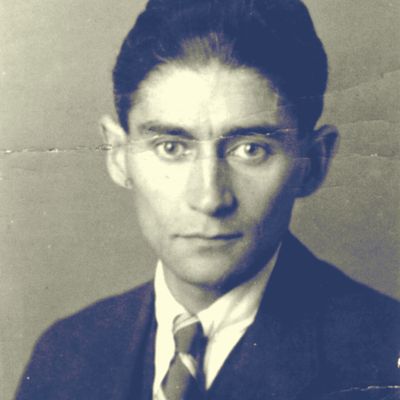
Here’s a Kafkaesque approach to the creative process: staying up so late that, as you doze at the writing desk, insights slip out of your unconscious. This was, according to a new paper in Lancet Neurology, precisely what Franz Kafka himself employed. As co-author Antonio Perciaccante quotes him in an interview with ResearchGate, sleeplessness allowed the Czech writer a certain insomniac mysticism: “[A]ll I possess are certain powers which, at a depth almost inaccessible at normal conditions, shape themselves into literature,” Kafka is quoted as saying.
In the estimation of Perciaccante and his wife and co-author Alessia Coralli, Kafka was tapping into hypnagogic hallucinations, or vivid visions you get before sleep takes you. (Etymologically, it’s being abducted into sleep.) He captured the experience in his diary, noting that “it was the power of my dreams, shining forth into wakefulness even before I fall asleep, which did not let me sleep.”
The evidence of insomnia is all over Kafka and the anxious Prague he brings readers into. In “Metamorphosis,” after all, Gregor is turned into (spoiler alert) a cockroach after a fitful night of rest. Indeed, Perciaccante argues, Gregor’s transformation isn’t just a symbol of social alienation, as the common interpretation goes, but a metaphor for what shoddy sleep and insomnia do to a person — a point that Donald Trump would do well to learn.
Ol’ Franz wasn’t the only trippy, world-shaping artist who blurred the boundaries between dreaming and waking life. In his life-hacky 50 Secrets of Magic Craftsmanship, Salvador Dalí recommended sleeping in a chair with a key in your hand, held over an overturned plate, so you might wake the moment it slips out of your hand — charging you with energy and flushing the mind with ideas. “Kubla Khan” came to poet Samuel Coleridge in a half-dreamed state; Mary Shelley had a vision of a “pale student of unhallowed arts kneeling beside the thing he had put together,” thus inspiring Frankenstein; chemist Friedrich August Kekulé imagined the structure of benzene to be six interlocking ouroboros, pointing him to what a ring of carbon atoms might look like.
Just last month, a Jungian analyst told Science of Us that dreams are a way for your personality to send a message to your consciousness — so it makes sense that there would be a wider aperture of inspiration in a half-dreamed state, too.




